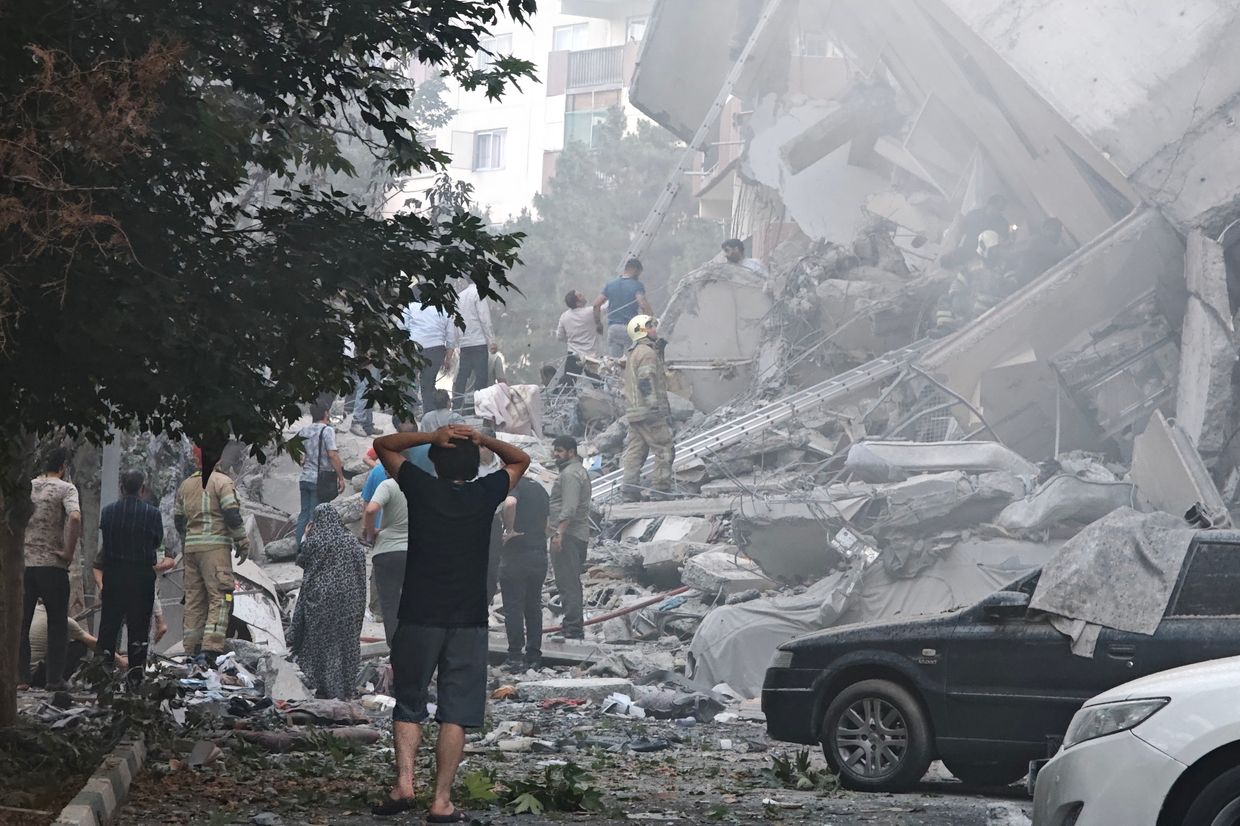Trump Urges the U.K. to Drill More Oil, Criticizing Its Energy Policy

© Pool photo by Andy Buchanan

© Pool photo by Andy Buchanan

© Ramsay de Give for The New York Times

© Eduardo Munoz/Reuters

Rosneft-linked oil payment rules changed after EU sanctions, Bloomberg reports. Mumbai-based Nayara Energy, the Indian refinery part-owned by Rosneft, now demands upfront payment or documentary letters of credit from buyers, showing how far-reaching the latest EU sanctions package is.
Nayara Energy Ltd., a key Indian refinery partially owned by Russia’s Rosneft, is now requiring advance payments or documentary letters of credit for upcoming oil shipments. According to Bloomberg, the shift was revealed in a revised tender document for a naphtha cargo scheduled for next month. The previous version of the tender included no such financial requirements. Naphtha is a fraction of crude oil, used for further petrochemical production.
Kpler analyst Zameer Yusof told Bloomberg the move “underscores how far-reaching the latest tranche of EU sanctions are.” He said the advance payment condition likely reflects fears that buyers may back out of deals or that banks could refuse to clear transactions involving sanctioned entities.
In a weekend statement, Rosneft claimed that the EU’s new measures as “unjustified and illegal.” Meanwhile, Nayara insisted that operations remain normal and said it is “exploring all legal and appropriate avenues” to respond to the situation.
India has become one of the largest importers of Russian crude since Moscow launched its full-scale invasion of Ukraine in 2022. As Western buyers turned away, Indian refiners stepped in to process Russian oil, including into diesel and other products that were then exported globally. Until now, Nayara had continued those operations without direct interference from sanctions.

© Victor Moriyama for The New York Times

London and Brussels jointly cut the Kremlin’s oil revenues. The UK government decided to lower the price cap on Russian oil from $60 to $47.60 per barrel after the EU adopted the 18th EU sanctions package on 18 July.
The new Russia sanctions package will include a formal ban on the Nord Stream 1 and 2 pipelines. It will also target 105 ships from Russia’s shadow fleet and the entities enabling their operations. In addition, 22 Russian banks will face new financial restrictions aimed at cutting their access to international funding. Brussels will also ban the export of European technologies used in Russian drone production.
According to Western analysts, Moscow’s oil profits have already dropped by 35% compared to last year. The new lower price cap will further restrict the Kremlin’s financial resources used to fund its aggression against Ukraine.
“The UK and its EU allies are turning the screw on the Kremlin’s war chest by stemming the most valuable funding stream of its illegal war in Ukraine even further,” said UK Chancellor of the Exchequer Rachel Reeves.
The official added that this decisive step to lower the crude oil price cap will target Russia’s oil revenues and intensify pressure on Russian President Vladimir Putin by exploiting his greatest vulnerability.
London emphasized that the sanctions are intended to punish the aggressor and preserve the stability of the global energy market.

© Alex Wong/Getty Images

© Scott Olson/Getty Images
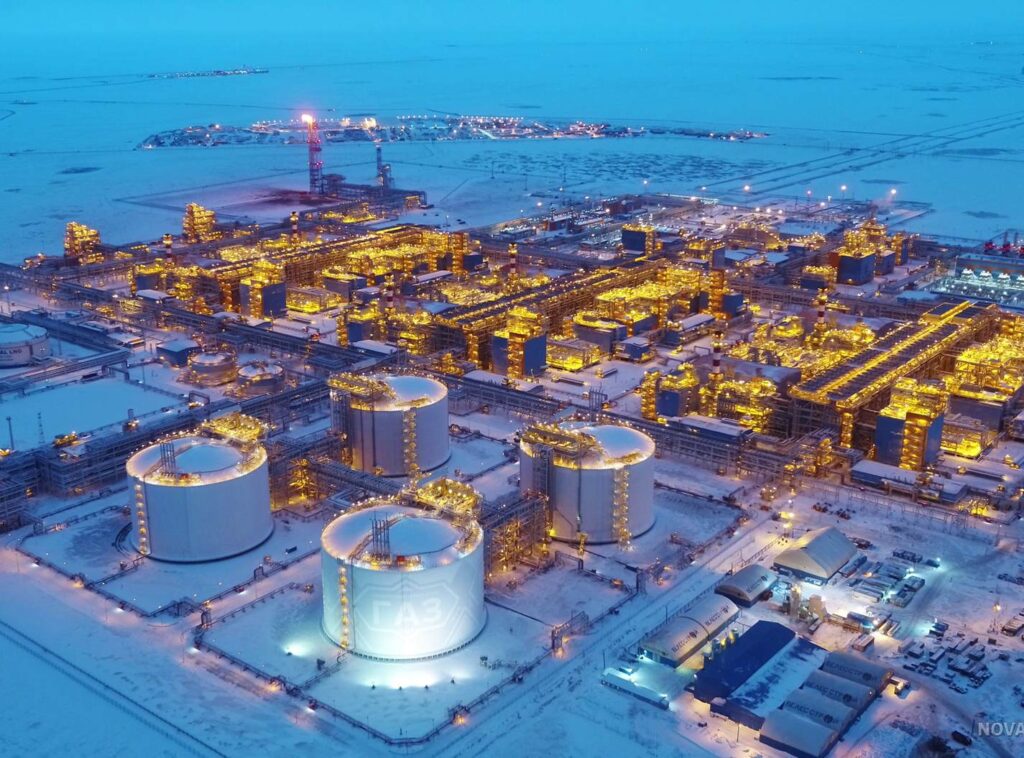
Oil Minister Hardeep Singh Puri says India is ready to meet its oil needs from alternative sources if Russia’s supplies are affected by secondary sanctions, Reuters reports.
Currently, Russia remains India’s main oil supplier, accounting for about 35% of total imports, but the country is actively seeking new sources, including Guyana, Brazil, and Canada. Moscow’s energy export remains its leading source of profits, which it uses to fund its war against Ukraine.
US President Donald Trump has recently warned that countries continuing to buy Russian oil could face 100% tariffs if Moscow does not agree to a peace deal with Ukraine within 50 days. NATO Secretary General Mark Rutte has also stated that due to the new economic measures, countries, including India, could suffer losses if continue business with Mooscow.
At the same time, India emphasizes energy security as a priority and says it will make decisions based on market conditions. The head of the Indian Oil Corporation, A.S. Sahni, has stated that if Russian supplies are restricted, the company will revert to traditional import schemes used before the war in Ukraine, when Moscow’s export was lower than 2%.
So far, some large private refineries, such as Reliance Industries and Nayara Energy, continue to purchase significant volumes of Russian oil, which led to an increase in imports from Russia in the first half of 2025.
Despite the restrictions the West has already imposed on Moscow, the Kremlin continues to use its “shadow” fleet. It includes a large group of oil tankers, many of which are old and poorly maintained.
Earlier, Ukraine’s Defense Intelligence said a powerful explosion occurred in the engine room of Russia’s Vilamoura tanker on 27 June, while it was en route from the Libyan port of Es-Zuwaytina.
It was located about 150 km northeast of Libya’s territorial waters and was carrying approximately 1 million barrels of crude oil. The tanker sailed under the Marshall Islands flag.

€50 billion sits waiting. But Ukraine’s solar revolution measures just 102 MW. And Rome just promised more money through the same broken system.
The Ukraine Recovery Conference wrapped up in Rome last week with familiar promises: €2.3 billion in new agreements, including €265 million for “energy security and green transition” and €500 million in guarantees and grants to help Ukraine’s small businesses.
But missing from the announcements was any mention of fixing the fundamental problems that keep Ukrainian communities locked out of the European Union’s flagship funding tool, the Ukraine Facility.
Let’s be clear: this facility, worth €50 billion, is a significant commitment. Pillar II, the part meant to help rebuild Ukraine’s economy and support clean energy projects, has the potential to do real good. But right now, it’s still lagging behind. There is no data, transparency, or investor confidence. Most importantly, there is no access for small and medium-sized businesses.
The money is there. But the results are harder to find. One result was a bank survey conducted by the National Bank of Ukraine (NBU) with 20 banks, which showed that Ukrainian banks have issued 3,500 loans worth almost UAH 17 billion for energy projects.
It seems like a lot, however, many of the energy projects supported so far rely on diesel or gas, hardly the clean energy transformation we’ve been promised. The numbers tell the story: while solar projects received funding for 102 MW, gas-piston cogeneration units got 185 MW and diesel generators another 102 MW. Ukrainian banks financed nearly three times more fossil fuel capacity than solar power.
The scale of this shortfall becomes clear when you consider what Ukraine had before the war: approximately 9.9 GW of installed renewable energy capacity, including about 6 GW from solar power alone. Ukraine’s National Renewable Energy Action Plan aims for renewables to constitute 27% of electricity consumption by 2030, requiring a total installed capacity of 12.2 GW of solar energy.
That makes the current 102 MW addition look like what it is: a drop in the bucket.
Despite the ongoing war, Ukraine commissioned around 660 MW of new renewable energy capacities during 2022-2023, encompassing solar, wind, biogas, and small hydroelectric power plants.
Wind and solar power plants generated about 10% of Ukraine’s electricity as of 2023, with the share of clean energy produced, including large hydropower plants, reaching 20.3%—an increase from the pre-war period.
In 2024, Ukrainian state banks approved loans for the construction of 83 MW of solar power plants on the roofs of private households, which is an absolute record for the country since the implementation of such projects.
It should be noted that before the full-scale invasion, only 0.98 GW of grid-connected solar power plants had been built in Ukrainian households.
Citizens can’t even find a basic map showing where these 3,500 projects are located. No one knows exactly which projects have been funded, which regions are benefiting, or even how many of these projects have actually started working.
Some project details emerge piecemeal – like Mykolaiv’s 20 MW solar plants – but comprehensive data remains elusive. Citizens still can’t answer basic questions: Which oblasts received the most funding? How many small businesses applied versus how many got approved? What percentage went to Ukrainian companies versus international contractors?
These questions remain unanswered even after Rome. More basic transparency is needed, so that citizens and civil society can track where this money goes and whether it’s doing any good.
The small amount of information available in the public domain highlights that financial support for initiatives under Pillar II only started in 2025 and lacks a clear implementation schedule, despite the fact that these steps are crucial to improving Ukraine’s energy infrastructure and sustainable development in the face of current challenges.
As of today, all renewable energy projects implemented in Ukraine since 2022 are supported by leading international partners, rather than under Pillar II.
Even EU-supported analysis confirms the system’s dysfunction. A recent report by climate campaign group Razom We Stand found that there is “no comprehensive, publicly accessible database or consolidated statistical reporting” on funded projects. The report calls for establishing “a robust, transparent reporting system” – acknowledging the very transparency problems Ukrainian communities have been experiencing.
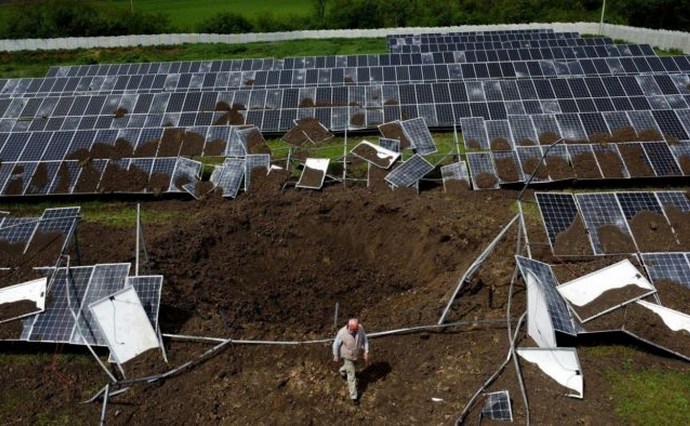
Then there’s the issue of who’s actually able to access these funds. Most of the financing so far seems to flow through international banks. But Ukraine’s recovery won’t come from top-down aid alone. Local businesses, especially small and medium-sized ones, are the backbone of any real rebuild. And right now, they’re shut out.
It’s not for lack of interest. Ukrainian companies and communities are eager to get involved in rebuilding through clean energy and sustainable infrastructure. But the application process under Pillar II creates barriers that seem designed to exclude them.
The result? A system that talks about supporting Ukrainian recovery while systematically excluding Ukrainian actors from participating in their own rebuild.
Three months after Rome, the EU announced another €1.6 billion initiative for Ukrainian SMEs, scheduled for implementation in “the second half of 2025.” The pattern continues: more announcements, delayed implementation, while Ukrainian companies wait for access.
Despite all this, and against the backdrop of this devastating war, Ukraine is pushing forward with its clean energy revolution. Andriy Konechenkov, Chairman of the Board of the Ukrainian Wind Energy Association, recently announced that seven new wind power plants are currently under construction in Ukraine, with a total capacity of 4 GW of projects ready for implementation.
Last month, international consulting company Boston Consulting Group predicted an increase in the share of renewable sources in the structure of Ukrainian electricity production from 15% (2022 figure) to 28% until 2040, with the potential for further growth.
Balint Silhavi, Principal of the Boston Consulting Group, said: “We expect that about 50% of new generation will be solar and wind power plants. This means that the entire energy sector will become greener and greener.”

These renewable energy projects and optimistic predictions show that Ukraine is working independently to push for renewable energy rebuilding. Rome was the moment to address the systemic dysfunction keeping Ukrainian communities locked out of their own recovery funding.
Instead, the EU chose to announce more billions flowing through the same broken channels.
Ukraine needs more than big promises. We need smart, targeted support that strengthens our economy, protects our communities, and builds toward long-term energy independence through renewables. Pillar II was meant to help deliver that. Rome should have fixed the system instead of feeding it more money.
This isn’t Ukraine’s first attempt at energy transformation that foundered on bureaucratic dysfunction.
In the late 2000s, Ukraine launched regional energy service companies like UkrESCO, which proved highly successful at implementing energy efficiency and investment projects. But the state failed to support their full privatization, retaining partial ownership through state enterprise shares.
The initiative lost momentum and never scaled—despite clear demand and early success.
That example shows what happens when system-level support disappears: even strong models fail to grow. Ukraine cannot afford to repeat that mistake with Pillar II, especially not while fighting for its survival.
Rome was the chance to course-correct. Instead, the EU chose to pour more billions into a system that systematically excludes the Ukrainian actors who should be rebuilding their own country.
As EU-funded research acknowledges, “continued collaboration with the Ukraine Facility and the European Commission is essential to prioritise renewable energy sources (RES) projects.” The question is whether this collaboration will finally deliver results or produce another year of billion-euro announcements while Ukrainian communities build their energy future independently.
Editor’s note. The opinions expressed in our Opinion section belong to their authors. Euromaidan Press’ editorial team may or may not share them.
Submit an opinion to Euromaidan Press
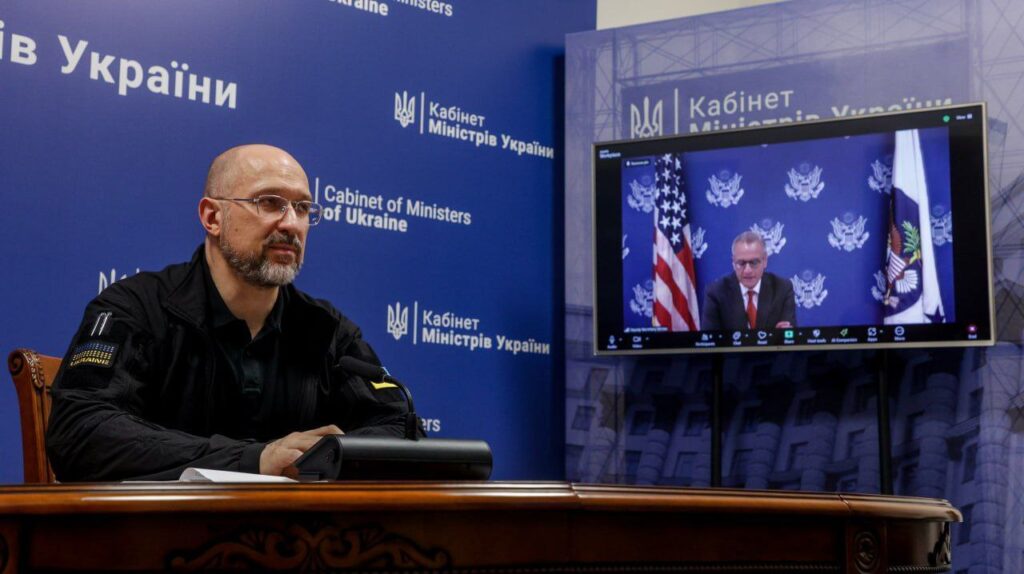
Ukraine to receive record-breaking financial aid package from EU and partners for recovery, energy, air defense, and agriculture. Prime Minister Denys Shmyhal has announced multi-billion euro agreements reached during the Ukrine Recovery Conference in Rome.
Among them is the creation of a new European Flagship Fund worth €500 million, set to launch in 2026 with a focus on energy and infrastructure investment.
In addition, under the Ukraine Facility, agreements have been signed for:
Meanwhile, European Commission President Ursula von der Leyen, commenting on the deal, stated that the EU aims to unlock up to €10 billion in investments to “rebuild destroyed homes, reopen hospitals, support businesses, and ensure energy security.”
Switzerland has committed €5 billion for economic recovery efforts.
The European Investment Bank is providing Ukraine with:
Separately, the UK is offering a $2.3 billion loan for Ukraine’s air defense needs. The funds will be used to procure weapons and defense materials from the UK. The loan has a 19-year term with a 6-year grace period.
Ukrainian farmers will also receive €50 million in grant aid.
Shmyhal added, “We’ve reached an agreement with the Council of Europe Development Bank to fund €100 million in housing certificates under the eRecovery program, and an additional €200 million loan to support internally displaced persons.”
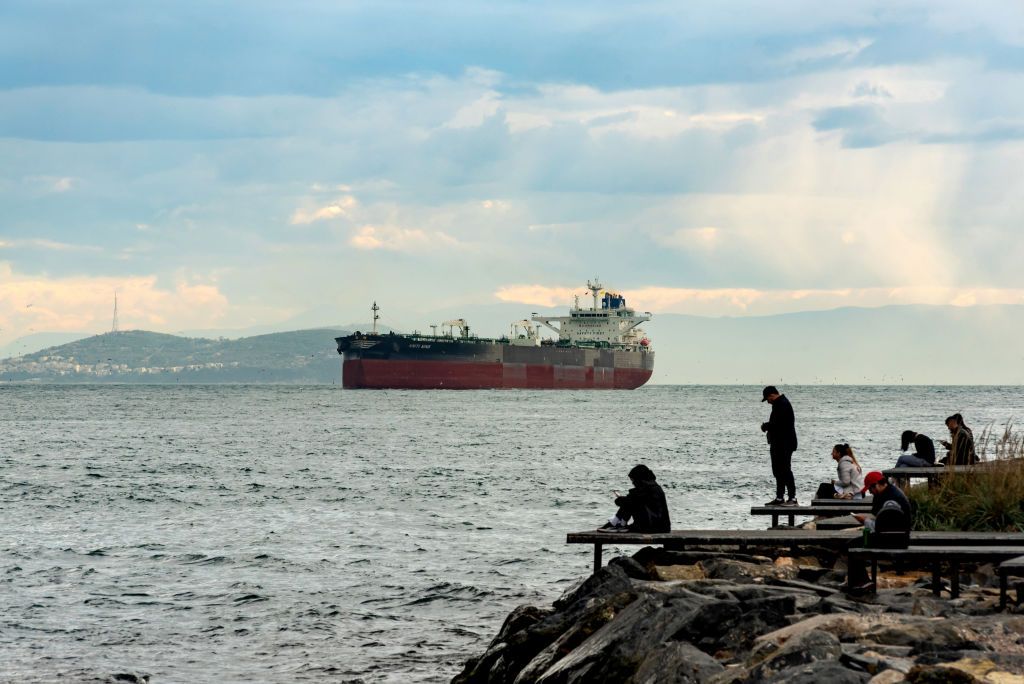
Russia's crude oil shipments have dropped to their lowest level since February, as refinery processing outpaces production growth and trims available export volumes, Bloomberg reported on July 8.
Russia has used its revenues from energy exports to finance the war in Ukraine.
Seaborne crude flows averaged 3.12 million barrels a day over the four weeks to July 6, a 3% decline from the previous period ending June 29, according to tanker-tracking data compiled by Bloomberg. That's the lowest level recorded since the four-week period ending Feb. 23.
The gross value of Moscow's oil exports rose by about $100 million, or 8%, to $1.36 billion for the week ending July 6, Bloomberg said. That increase was due to higher volume, although average export prices declined for a second consecutive week.
Most of Russia's oil continues to head to Asia. Shipments to the region averaged 2.73 million barrels per day, slightly lower than the previous month. Flows to Turkey fell to 370,000 barrels a day, and shipments to Syria held steady at 25,000 barrels a day.
The European Union is seeking to tighten sanctions on Russia. Ambassadors have yet to approve the EU's 18th sanctions package due to opposition from Hungary and Slovakia. The bloc failed to adopt the new package on June 27.
The new package includes restrictions targeting Russia's energy and banking sectors, as well as transactions linked to the Nord Stream gas pipeline.
 The Kyiv IndependentTim Zadorozhnyy
The Kyiv IndependentTim Zadorozhnyy
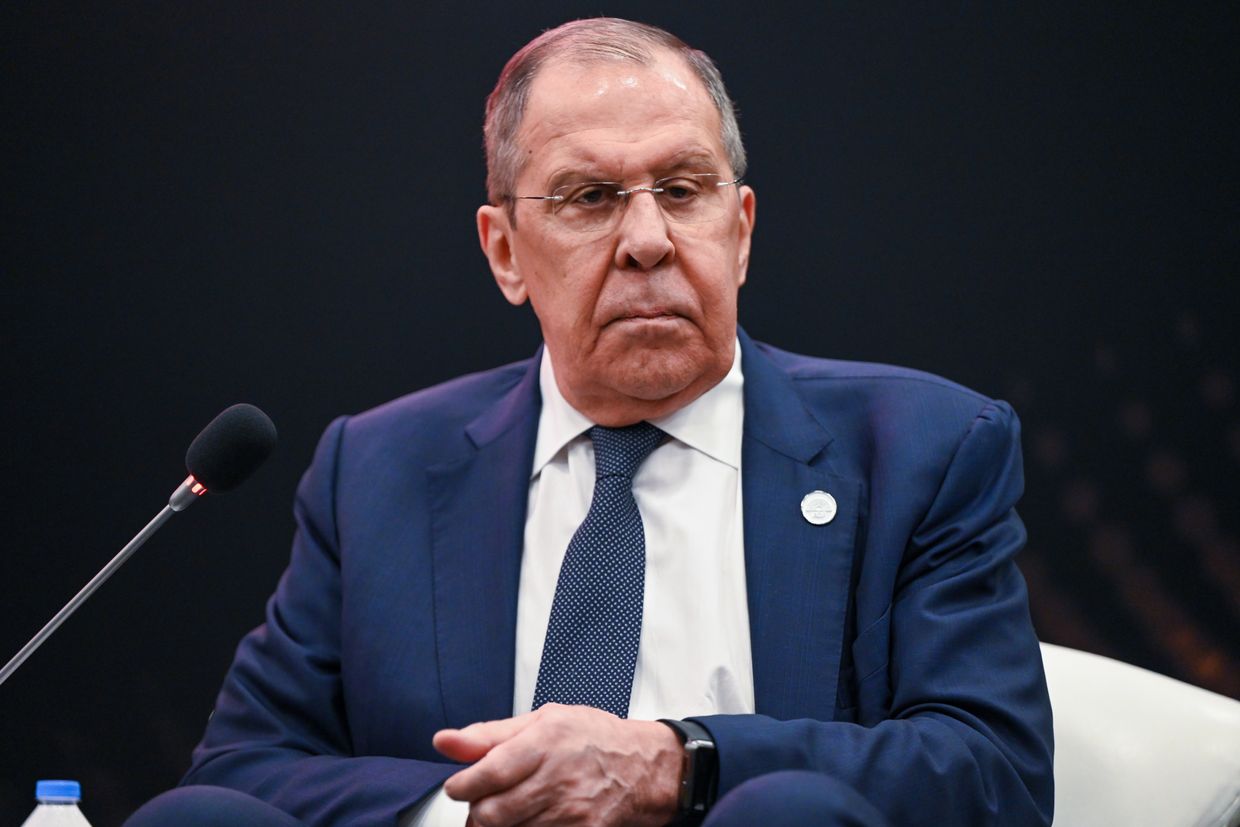
Russian Foreign Minister Sergey Lavrov reiterated Moscow's offer to mediate disputes over Iran’s nuclear program, during a meeting with his Iranian counterpart at the BRICS summit in Rio de Janeiro, Reuters reported on July 6.
Lavrov met with Iranian Deputy Foreign Minister Abbas Araqchi to discuss the situation, condemning recent Israeli and U.S. strikes on Iran, including attacks on nuclear sites under IAEA safeguards.
Moscow reaffirmed its support for Iran’s right to nuclear energy, and also offered to store Iranian uranium as part of a potential solution.
Although Iran officially denies intentions to pursue nuclear weapons, tensions with the U.S. and Israel remain high following the Iran-Israel conflict in June, which has currently settled into an uncertain ceasefire.
Ukraine’s Foreign Ministry said on June 22 that Iran’s nuclear program must be dismantled to prevent it from threatening the Middle East or the wider world, following U.S. air strikes on Iranian nuclear facilities.
“Iran is complicit in the crime of aggression against Ukraine. The Iranian regime is providing military assistance to Russia, including the supply of UAVs and technologies that Russia consistently uses to kill people and destroy critical infrastructure,” the statement read.
Russia and Iran have deepened ties since the start of the full-scale invasion. Notably, Iran has provided Russia with thousands of Shahed drones used in attacks against Ukrainian cities, as well as short-range ballistic missiles.
 The Kyiv IndependentMartin Fornusek
The Kyiv IndependentMartin Fornusek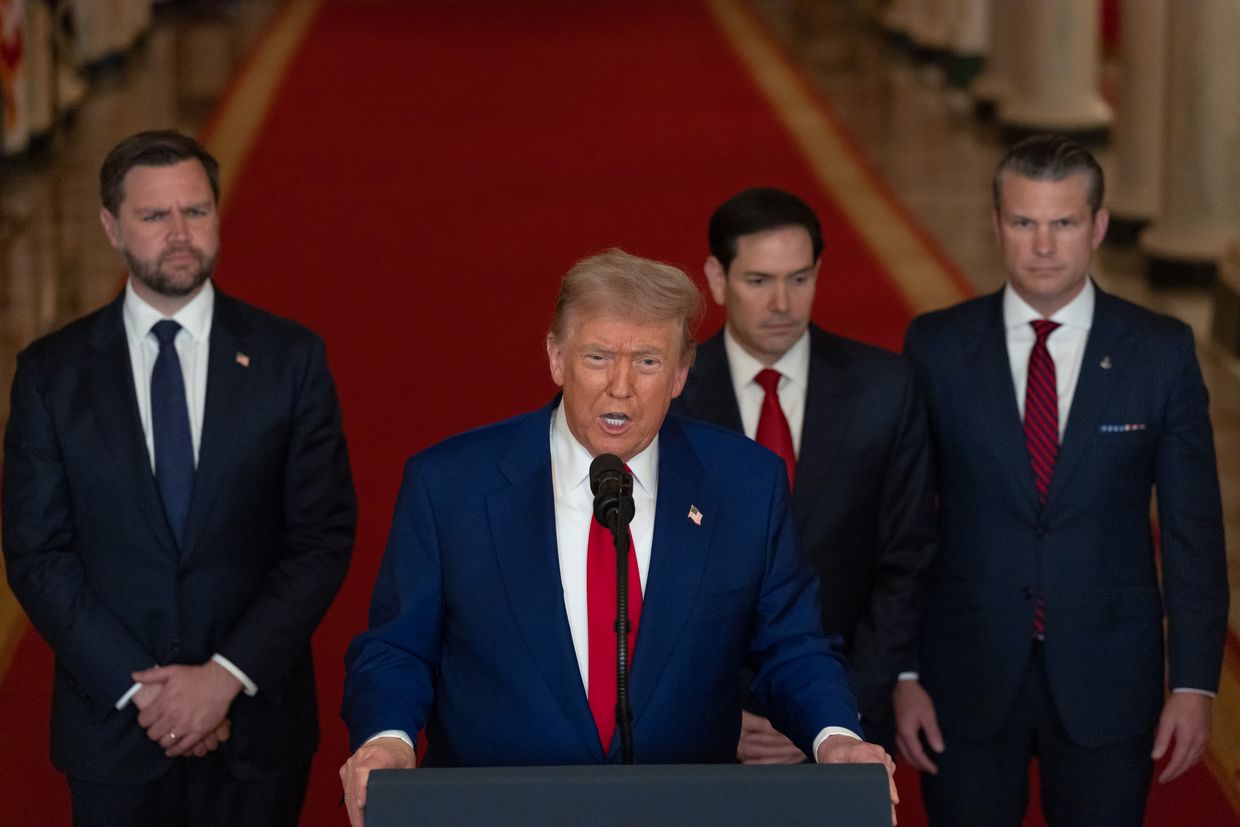
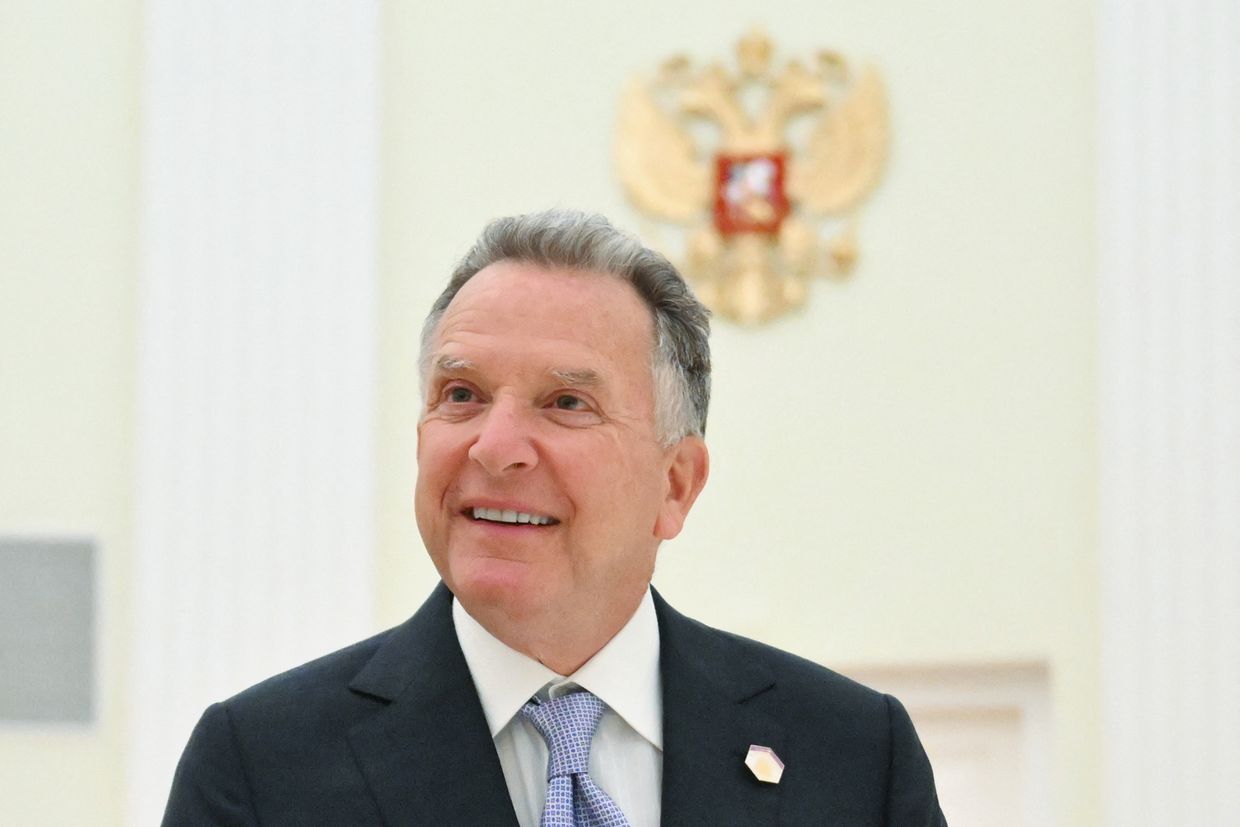
U.S. President Donald Trump's Special Envoy Steve Witkoff is pushing to lift U.S. energy sanctions on Russia, Politico reported on July 4, citing two people familiar with the matter.
The move is part of a broader debate within Trump's administration over how to engage with Moscow amid the ongoing war in Ukraine.
While Witkoff is reportedly advocating for the easing of energy sanctions, others in the administration disagree. Interior Secretary Doug Burgum favors reducing U.S. reliance on Russian imports rather than expanding trade, according to Politico.
Despite pledging during his campaign to end the war in Ukraine in "24 hours," Trump has made little progress on securing a ceasefire. After nearly seven months of his presidency, and several peace talks between Russia, Ukraine, and the United States, no ceasefire agreement has been reached.
Moscow continues intensifying its attacks against Ukrainian cities. Russia launched one of the largest aerial attacks on Ukraine on July 4, hours after Russian President Vladimir Putin had a phone conversation with Trump.
When journalists asked if he had made any progress with Putin on the call, Trump responded: "No, I didn't make any progress with him today at all."
Europe's energy sector is a central issue in the debate. According to Politico, Moscow is in early talks with Washington about potentially restarting the Nord Stream pipeline project, with backing from U.S. investors. The development has sparked concern in Brussels.
One senior EU official reportedly warned that Trump and Putin appear to be aiming to "divide the European energy market and create (separate) spheres of influence."
Witkoff, a real estate developer-turned-envoy, has raised eyebrows in Washington and abroad over his handling of high-level talks with Russia. As reported by NBC News in May, he has relied on Kremlin-provided translators during multiple meetings with Putin, including a visit to Moscow on April 26, just a day after a Russian missile attack killed 12 people in Kyiv.
Trump's administration has so far refrained from imposing new sanctions against Russia, even as Putin continues to reject calls for a ceasefire.
 The Kyiv IndependentThe Kyiv Independent news desk
The Kyiv IndependentThe Kyiv Independent news desk
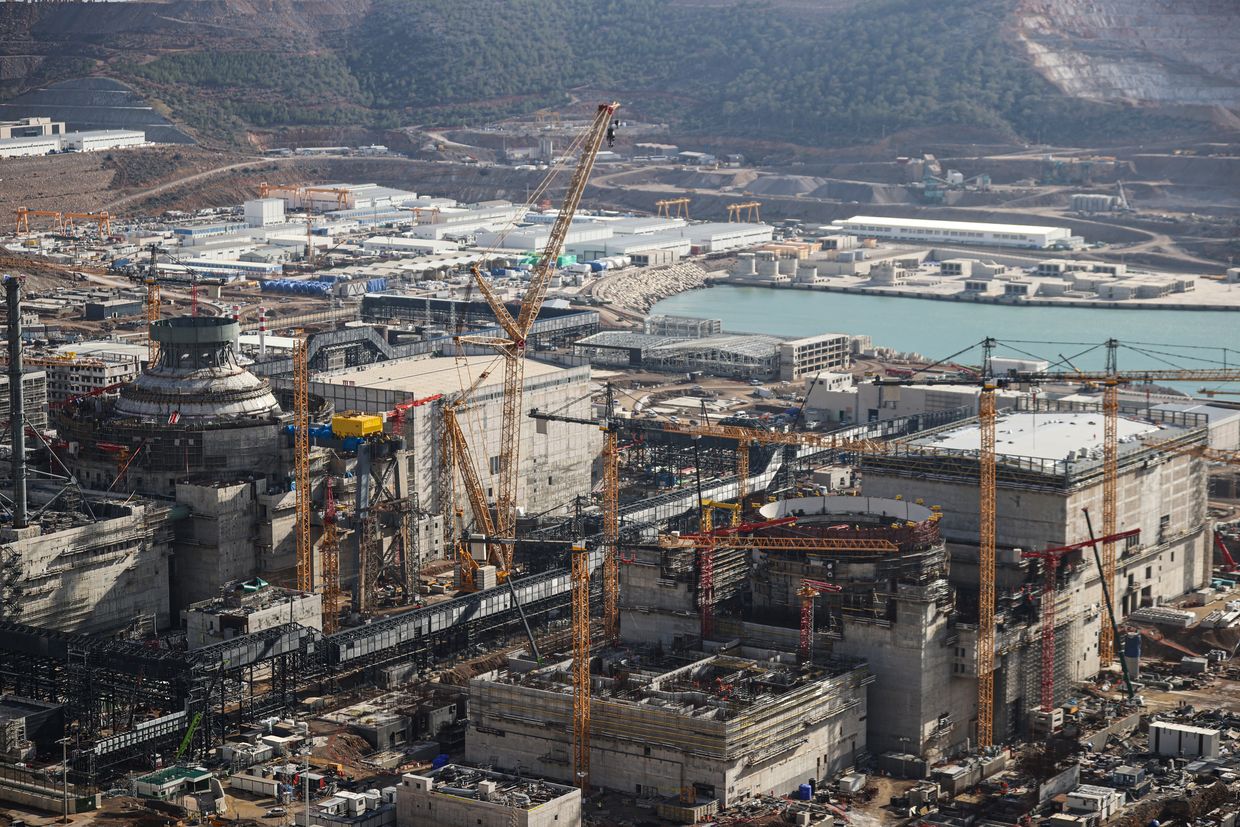
Russian nuclear giant Rosatom is negotiating the sale of a 49% stake in Turkey's Akkuyu Nuclear Power Plant project, estimated at $25 billion, Bloomberg reported on July 1.
The project is a cornerstone of Russian-Turkish energy cooperation. The Akkuyu plant, located in Mersin Province, is poised to become Turkey's first nuclear power facility.
The 4.8-gigawatt project is expected to begin supplying electricity in 2026, Anton Dedusenko, chairman of the board at Rosatom's Turkish subsidiary, told Bloomberg.
"The closer we are to the first unit generating electricity, the more investors start coming," Dedusenko said on the sidelines of the Nuclear Power Plants Expo & Summit in Istanbul.
A previous sale attempt in 2018 collapsed over commercial disagreements. This time, financing is complicated by the threat of U.S. sanctions, prompting Moscow and Ankara to consider alternative payment mechanisms.
"There are many ways how to deliver money here. We can deliver the Russian rubles, the Turkish lira," Dedusenko said.
Despite its NATO membership, Turkey has maintained open diplomatic and economic ties with Russia throughout the full-scale war against Ukraine, while continuing to supply aid to Kyiv and host international mediation efforts.
 The Kyiv IndependentDaria Shulzhenko
The Kyiv IndependentDaria Shulzhenko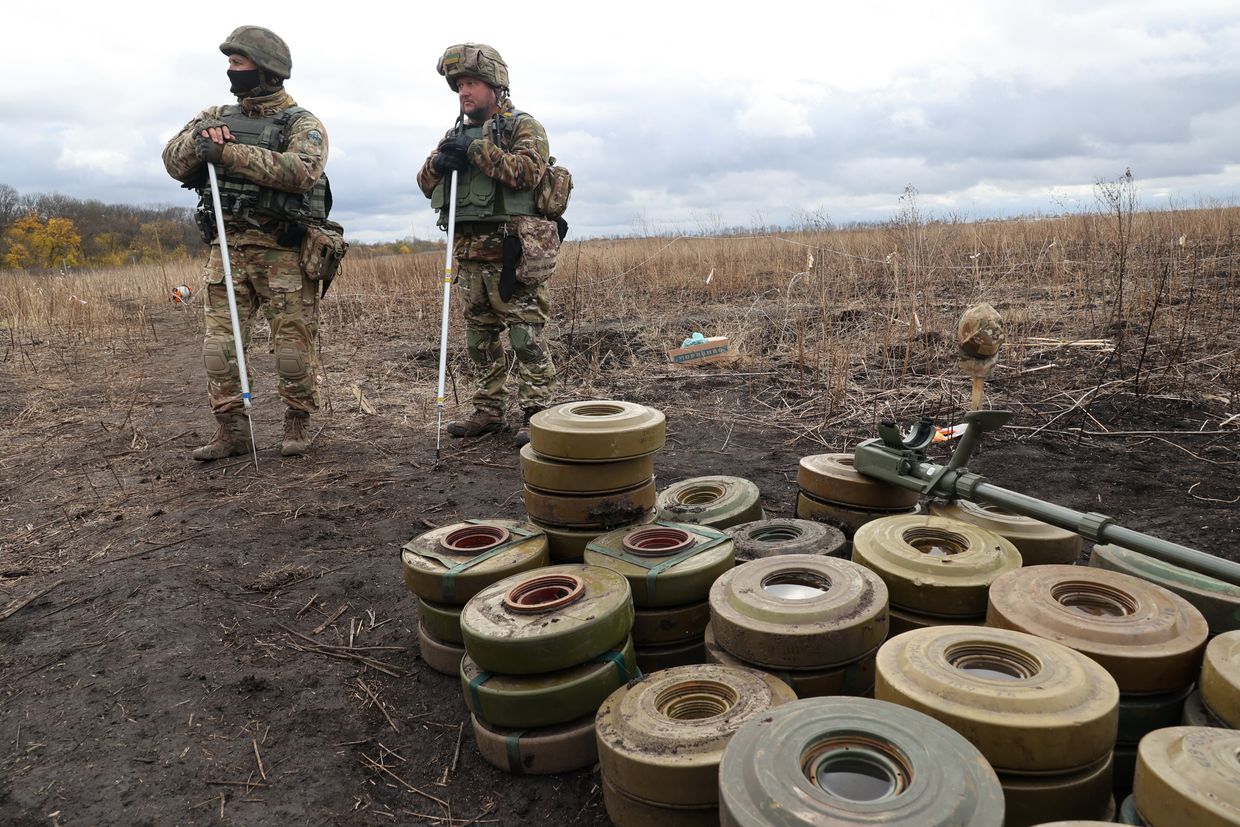
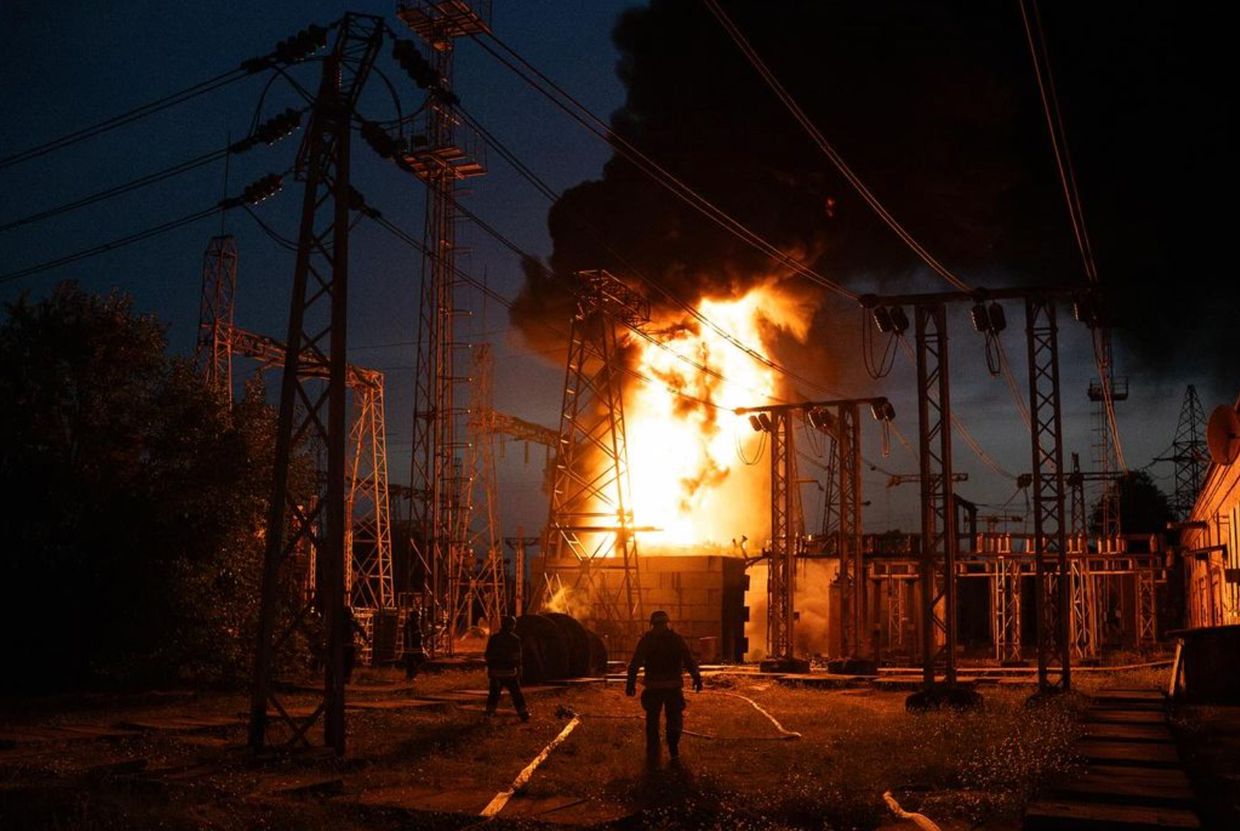
Ukraine boosted electricity exports by 150% in June 2025 compared to the previous month, reaching over 237,000 megawatt-hours (MWh), according to consulting firm ExPro Electricity.
Current export volumes have returned to autumn 2022 levels, before Russia launched systematic attacks against Ukraine's energy infrastructure that caused massive blackouts across the country.
This marks Ukraine's return to exporting more electricity than it imports for the first time since October 2023, ExPro analysis reports.
Electricity cannot be stored in large volumes for long periods, so it can be exported during certain hours when there is surplus in Ukraine’s energy system, and imported during deficit hours.
Hungary imported the majority of Ukrainian exports, with shipments jumping from 34,000 to 122,000 MWh in a single month.
The recovery represents a dramatic turnaround from June 2024, when Ukraine had no exports at all and imported 858,000 MWh, four times more than in June 2025.
Russia continues to target Ukraine's energy infrastructure, with the latest strike hitting a critical energy facility in Kherson Oblast on June 27 that caused widespread blackouts across multiple communities.
Governor Oleksandr Prokudin warned residents to prepare for prolonged outages as power engineers work to restore electricity, saying "Russia decided to plunge Kherson Oblast into darkness."
In February 2025, Emergency energy power shutdowns were introduced in eight Ukrainian oblasts due to Russian attacks on the country's energy system.
 The Kyiv IndependentAnna Fratsyvir
The Kyiv IndependentAnna Fratsyvir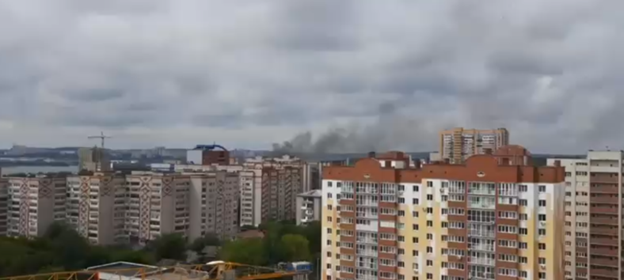
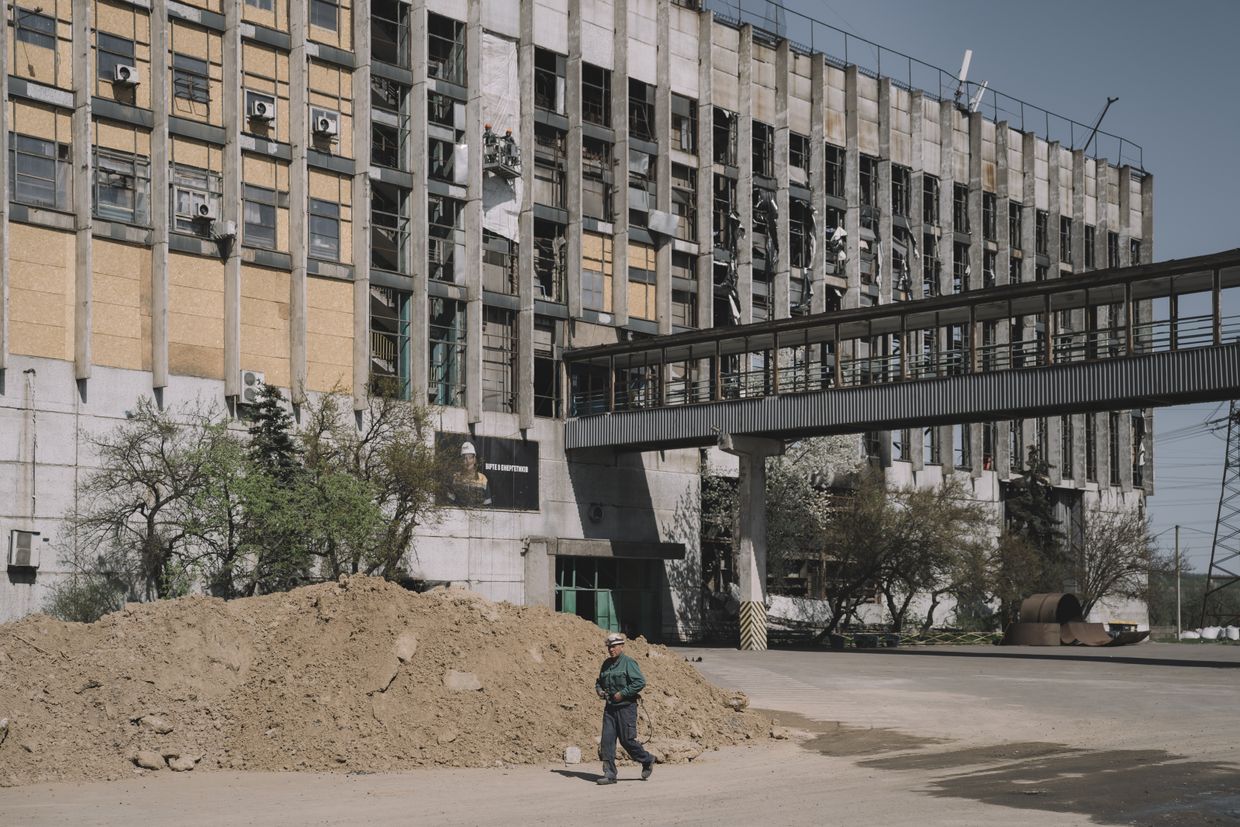
Russian forces struck a critical energy facility in Kherson Oblast, causing widespread power outages across several communities, Governor Oleksandr Prokudin said on June 27.
"Russia decided to plunge Kherson Oblast into darkness," Prokudin wrote on Telegram. He said the attack has disrupted electricity supply to multiple settlements.
Local power engineers are working to stabilize the situation, Prokudin said.
"I ask the residents of the region to prepare for a prolonged power outage. Power engineers are doing everything possible to stabilize the situation," he said.
Kherson and the surrounding regions have frequently come under Russian fire since Ukrainian forces liberated the city from occupation in November 2022. Russian troops continue to attack the area with artillery and drones from across the Dnipro River.
The Russian army consistently targeted Ukrainian energy infrastructure. Throughout 2024, Moscow launched 13 mass attacks with drones and missiles on Ukraine's energy infrastructure. Ukraine was forced to introduce emergency blackouts across the country.
Ukraine and Russia agreed to a partial 30-day energy truce, following consultations with the U.S. in Riyadh on March 25. Moscow violated the ceasefire more than 30 times, Foreign Ministry Spokesperson Heorhii Tykhyi said on April 16.
 The Kyiv IndependentKollen Post
The Kyiv IndependentKollen Post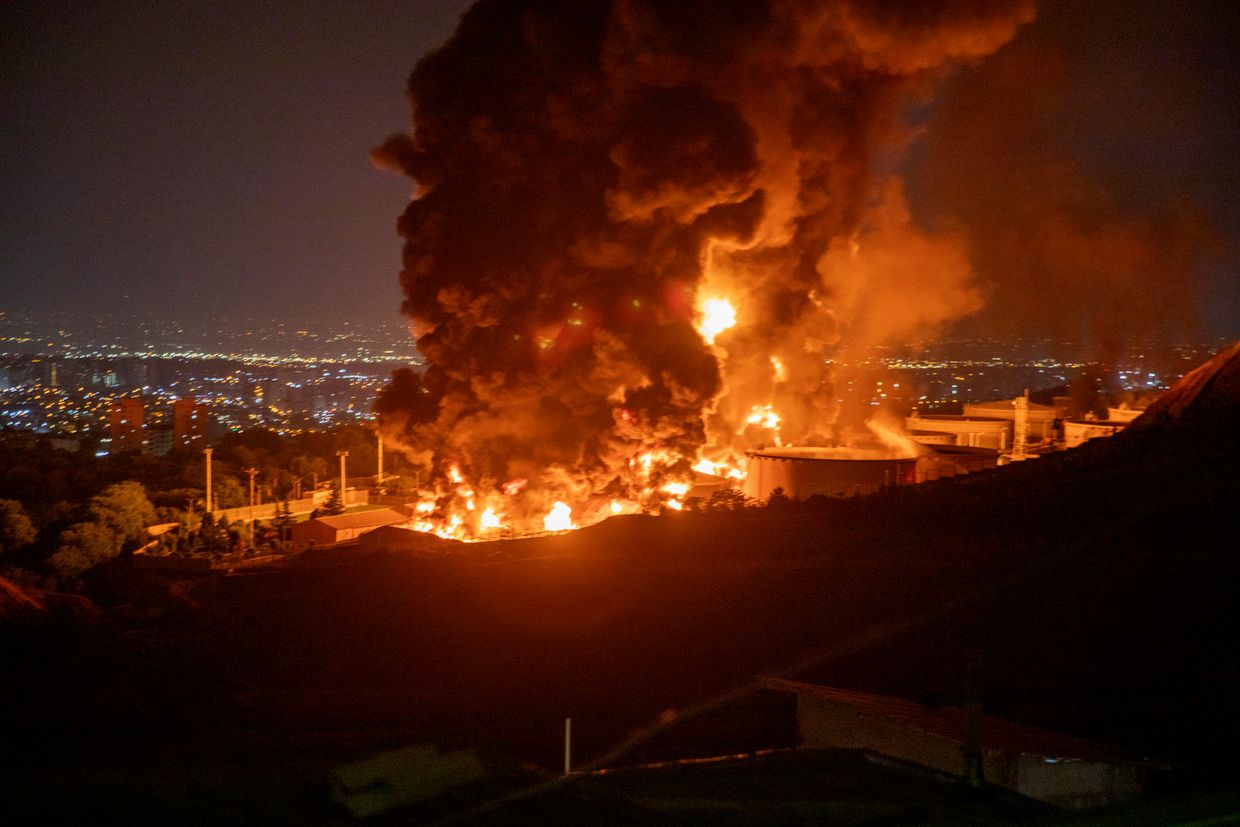
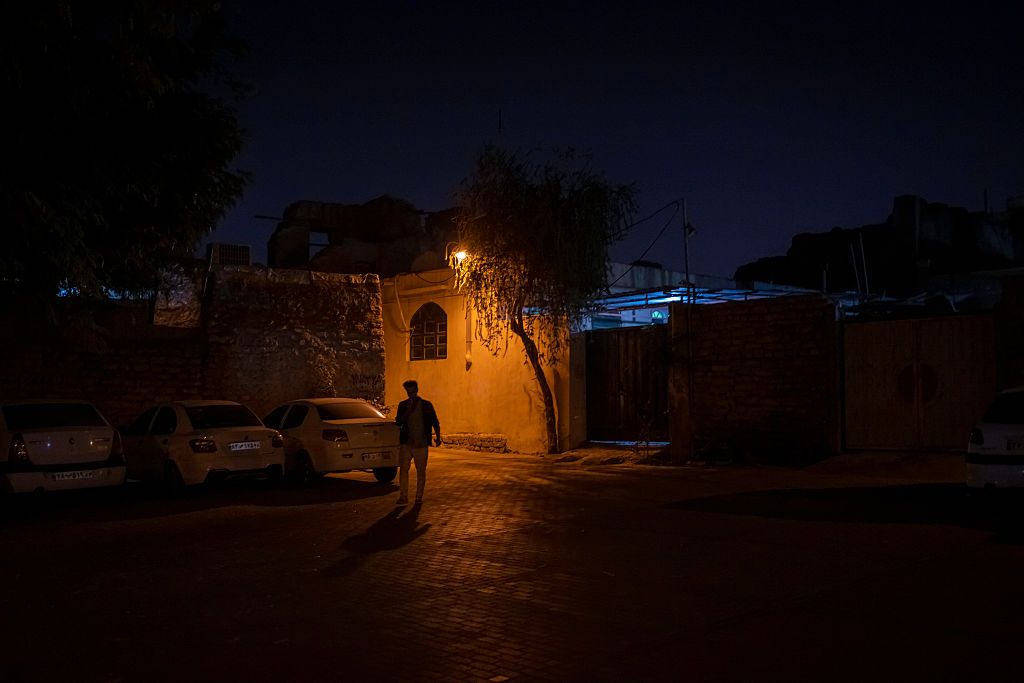
Recent U.S. strikes on three Iranian nuclear facilities did not eliminate the core components of Tehran’s nuclear program and likely delayed it by only a few months, according to an early assessment by the U.S. Defense Intelligence Agency (DIA), CNN reported on June 24, citing four sources familiar with the findings.
The analysis, based on a battle damage report from U.S. Central Command, contradicts public statements by President Donald Trump and Defense Secretary Pete Hegseth, who claimed the operation had "obliterated" Iran’s nuclear capabilities.
"So the (DIA) assessment is that the U.S. set them back maybe a few months, tops," one source told CNN, adding that Iran’s stockpile of enriched uranium was not destroyed and that most centrifuges remain “intact.”
The White House acknowledged the assessment’s existence but strongly dismissed it. "This alleged assessment is flat-out wrong and was classified as ‘top secret’ but was still leaked to CNN by an anonymous, low-level loser in the intelligence community," press secretary Karoline Leavitt said. “The leaking of this alleged assessment is a clear attempt to demean President Trump, and discredit the brave fighter pilots who conducted a perfectly executed mission to obliterate Iran’s nuclear program. Everyone knows what happens when you drop fourteen 30,000 pound bombs perfectly on their targets: total obliteration.”
Trump, for his part, stood by his assessment of the mission's success. “I think it’s been completely demolished,” he said on Tuesday. “Those pilots hit their targets. Those targets were obliterated, and the pilots should be given credit.” Asked if Iran could rebuild, Trump responded: “That place is under rock. That place is demolished.”
While both Trump and Hegseth praised the strikes as decisive, others expressed caution. Chairman of the Joint Chiefs of Staff Dan Caine said it was “way too early” to determine whether Iran retained nuclear capabilities.
Republican Rep. Michael McCaul, former chair of the House Foreign Affairs Committee, also avoided endorsing the president’s characterization. “I’ve been briefed on this plan in the past, and it was never meant to completely destroy the nuclear facilities, but rather cause significant damage,” McCaul told CNN. “But it was always known to be a temporary setback.”
The DIA’s assessment reportedly found that damage at the Fordow, Natanz, and Isfahan sites was mostly limited to aboveground infrastructure, such as power systems and uranium metal processing buildings. The underground facilities—where Iran's most sensitive nuclear work takes place—were largely unaffected, the sources said.
According to CNN, Israel had been carrying out its own strikes on Iranian nuclear facilities prior to the U.S. operation, but relied on U.S. B-2 bombers equipped with 30,000-pound “bunker buster” bombs to finish the job. Despite over a dozen bombs being dropped on Fordow and Natanz, the sites’ key components remain intact, the sources said.
The U.S. also reportedly used Tomahawk missiles launched from a submarine to target Isfahan, rather than deploying bunker busters. A source said this was due to doubts over whether the bombs could penetrate Isfahan’s deep underground levels, which are believed to be even more fortified than Fordow.
Two sources also told CNN that Iran likely retains undisclosed nuclear facilities that were not targeted and remain operational.
Meanwhile, classified briefings for lawmakers on the strikes were postponed. The all-Senate briefing was rescheduled for Thursday, and the House briefing’s new date remains unclear.
 The Kyiv IndependentAndrew Chakhoyan
The Kyiv IndependentAndrew Chakhoyan

Ukrainian state grid operator Ukrenergo's supervisory board has appointed Vitaliy Zaichenko, the company's current chief dispatcher, as its new head, Ukrainian media reported on June 23.
The appointment comes after ten months of interim leadership following the controversial dismissal of former CEO Volodymyr Kudrytskyi in September 2024.
The company has been under temporary management of Oleksiy Brekht while the supervisory board struggled with prolonged disputes over the selection process.
Ukrenergo, which operates Ukraine's electricity transmission system and is a member of the European electricity grid network (ENTSO-E), plays a critical role in the country's energy security, especially during wartime when Russian attacks have repeatedly targeted energy infrastructure.
Zaichenko beat out two other finalists: Oleksiy Brekht, the interim head of Ukrenergo, and Ivan Yuryk, former acting head of Ukrainian Railways.
The supervisory board's June 4 attempt to elect a new CEO failed amid conflict with the Energy Ministry, which changed appointment rules without consulting the Energy Community Secretariat, drawing criticism from European partners.
The new rules complicated the selection process by requiring five out of seven supervisory board votes instead of the previous four needed to elect a chairman.
According to Ukrainian MP Max Khlapuk, the European Bank for Reconstruction and Development (EBRD) threatened to block 141 million euros ($152 million) in funding and demand early repayment of 533 million euros ($574 million) already received over the rule changes.
Former Ukrenergo CEO Volodymyr Kudrytskyi was dismissed on Sept.2, 2024, after President Volodymyr Zelensky called for his resignation over alleged failures to protect substations from Russian missiles and drones.
Kudrytskyi disputed this account, saying he initiated the supervisory board meeting himself, though he did not reveal the reasons for his dismissal.
Following Kudrytskyi's dismissal, supervisory board chairman Daniel Dobbeni and member Peder Andersen resigned early, citing political pressure in personnel decisions.
 The Kyiv IndependentYana Prots
The Kyiv IndependentYana Prots

Ukraine's largest private energy company DTEK and British clean energy group Octopus Energy have launched a program to install rooftop solar panels and battery storage systems at Ukrainian businesses and public institutions, DTEK said in a press release on June 23.
The program, called RISE (Resilient Independent Solar Energy), was announced at Octopus Energy's Tech Summit in London and aims to raise 100 million euros ($115 million) to finance 100 energy projects over three years, helping stabilize the grid, lower electricity costs and protect customers from outages, the company said.
DTEK’s facilities have been repeatedly targeted since the start of Russia’s full-scale invasion as Moscow sought to cripple Ukraine's energy infrastructure. The company was forced to shut down its gas production facilities in Poltava Oblast in March.
"About 70% of Ukraine's thermal generation capacity has been damaged, destroyed or seized since the full-scale invasion," said DTEK CEO Maksym Timchenko in the press release.
“This has created not only an urgent need to rebuild but also an opportunity to accelerate the shift to a decentralized, renewable energy system,” he added.
The alternative energy systems will be installed by D.Solutions, DTEK's business unit operating under the Yasno retail brand.
Installed equipment will run on Octopus Energy's AI-powered Kraken operating system, enabling businesses to optimize energy use in real time, reduce consumption during peak hours and sell surplus electricity back to the grid.
"They (DTEK) are rebuilding at pace and pioneering a decentralized, smart energy system powered by homegrown renewables," said Greg Jackson, Octopus Energy Group founder and CEO.
According to DTEK, Ukraine's commercial and industrial energy market has an untapped potential of 300 megawatts annually, valued at 200 million euros ($229 million). DTEK's Yasno brand serves over 60,000 business customers and can generate projects worth 30 million euros per year.
DTEK previously announced plans to build one of Europe's largest energy storage facilities with six installations across the country, totaling 200 megawatts to power 600,000 households. The company secured a $72 million loan from three Ukrainian banks.
 The Kyiv IndependentKollen Post
The Kyiv IndependentKollen Post

Iran has partially suspended production at the South Pars gas field — the world’s largest — after an Israeli airstrike triggered a fire at the site, the semi-official Tasnim news agency reported on June 14, according to Reuters. If confirmed, it would mark the first Israeli strike targeting Iran’s vital oil and gas infrastructure.
The South Pars field, located offshore in southern Bushehr province, is responsible for the bulk of Iran’s gas output. Tehran shares the field with Qatar, which refers to its portion as the North Field. A strike on South Pars represents a significant escalation, coming after oil prices surged 9% on June 13 following Israel’s initial wave of attacks, which had not targeted energy infrastructure, Reuters reports.
Israel launched its air offensive against Iran on June 13, killing commanders and scientists and bombing nuclear sites, in what it described as an effort to prevent Tehran from developing nuclear weapons.
The Iranian oil ministry said the fire caused by the strike has been extinguished. According to Tasnim, the fire broke out in one of four units of Phase 14 at South Pars, halting the production of 12 million cubic meters of gas.
Iran, the world’s third-largest gas producer after the United States and Russia, produces around 275 billion cubic meters of gas per year, about 6.5% of global output.
Due to international sanctions, the country consumes most of this domestically. Qatar, which operates the majority of the shared field with support from global firms such as Exxon and Shell, produces 77 million tonnes of liquefied natural gas annually, supplying both European and Asian markets.
 The Kyiv IndependentChris York
The Kyiv IndependentChris York